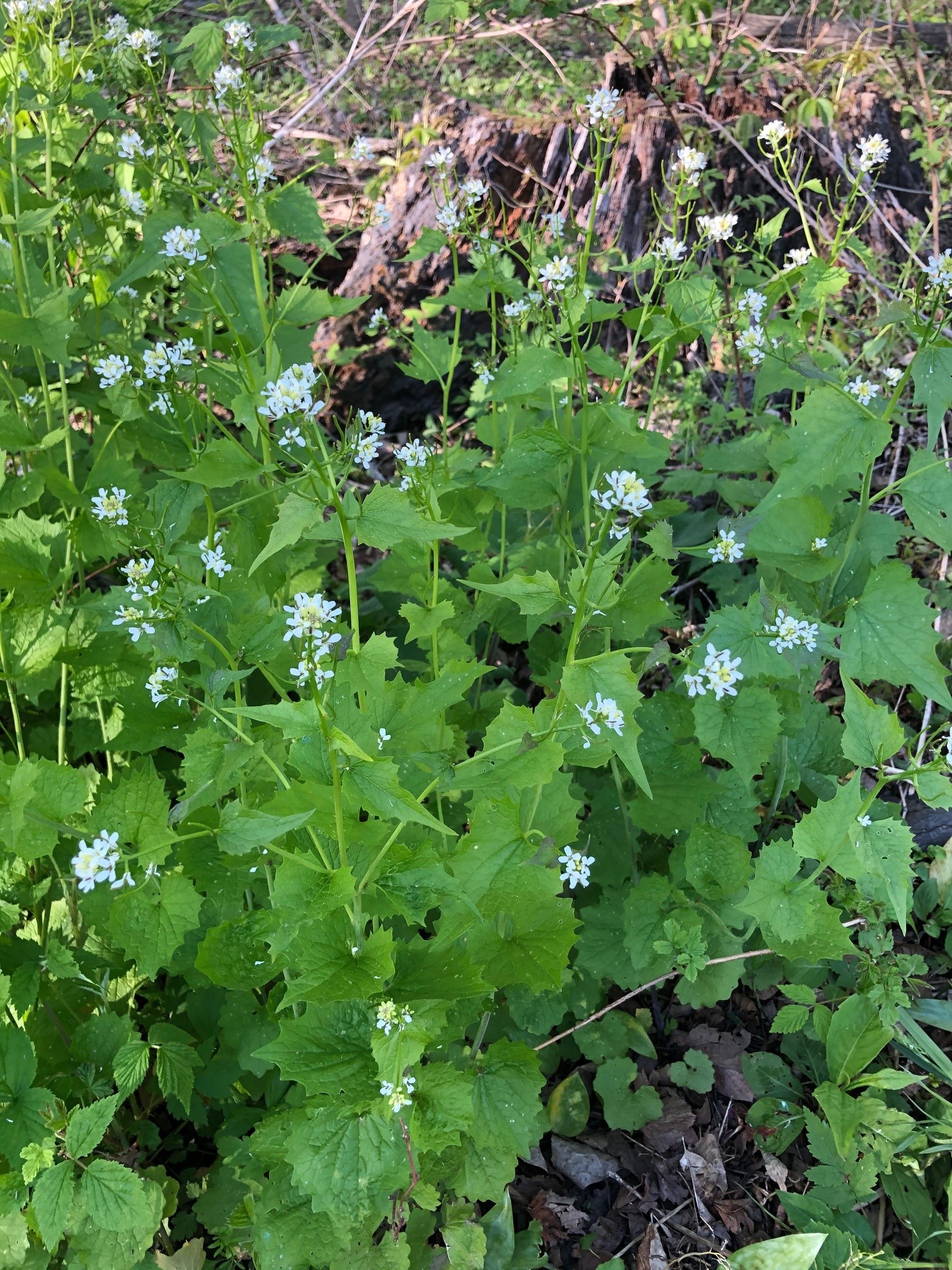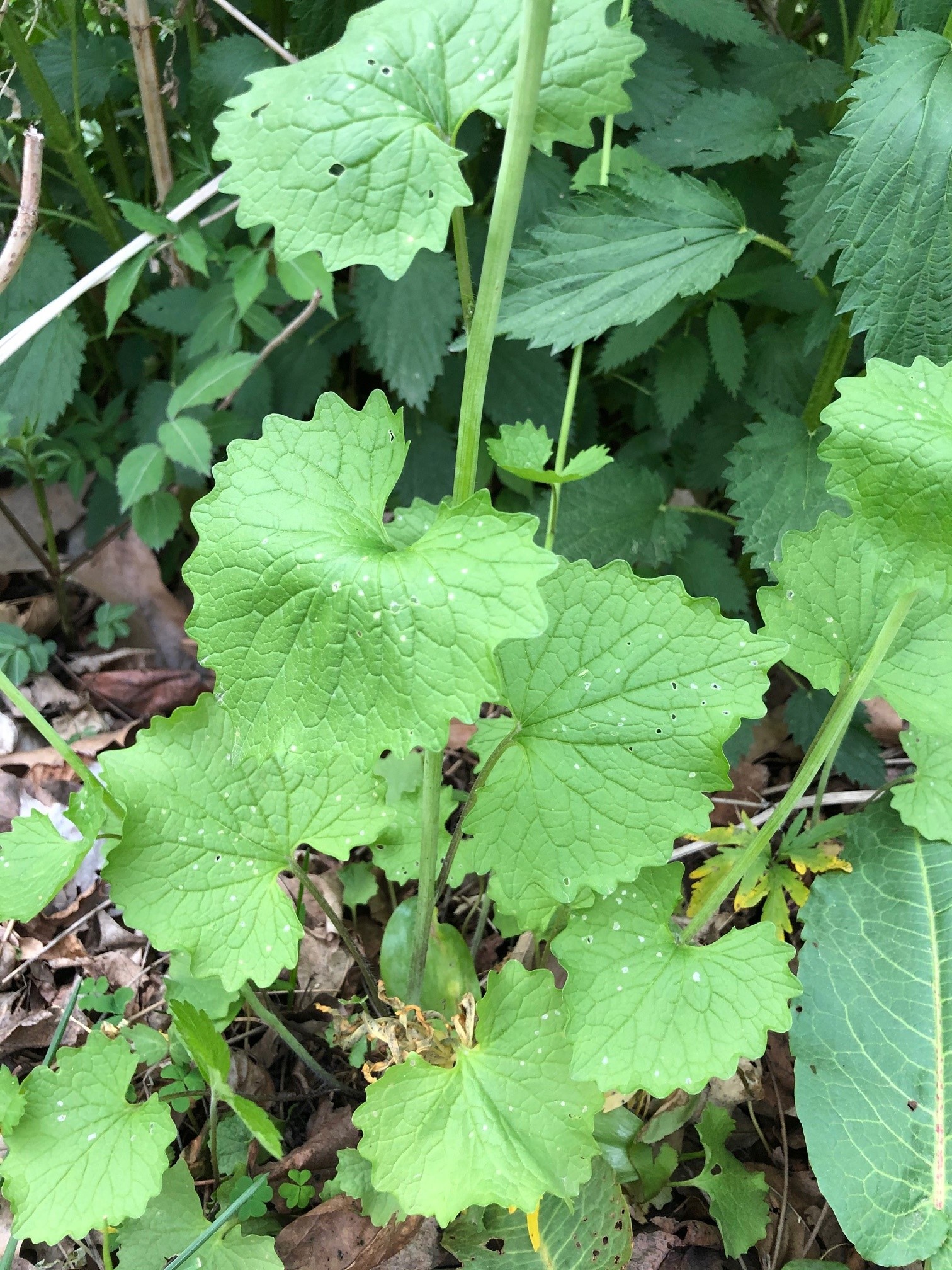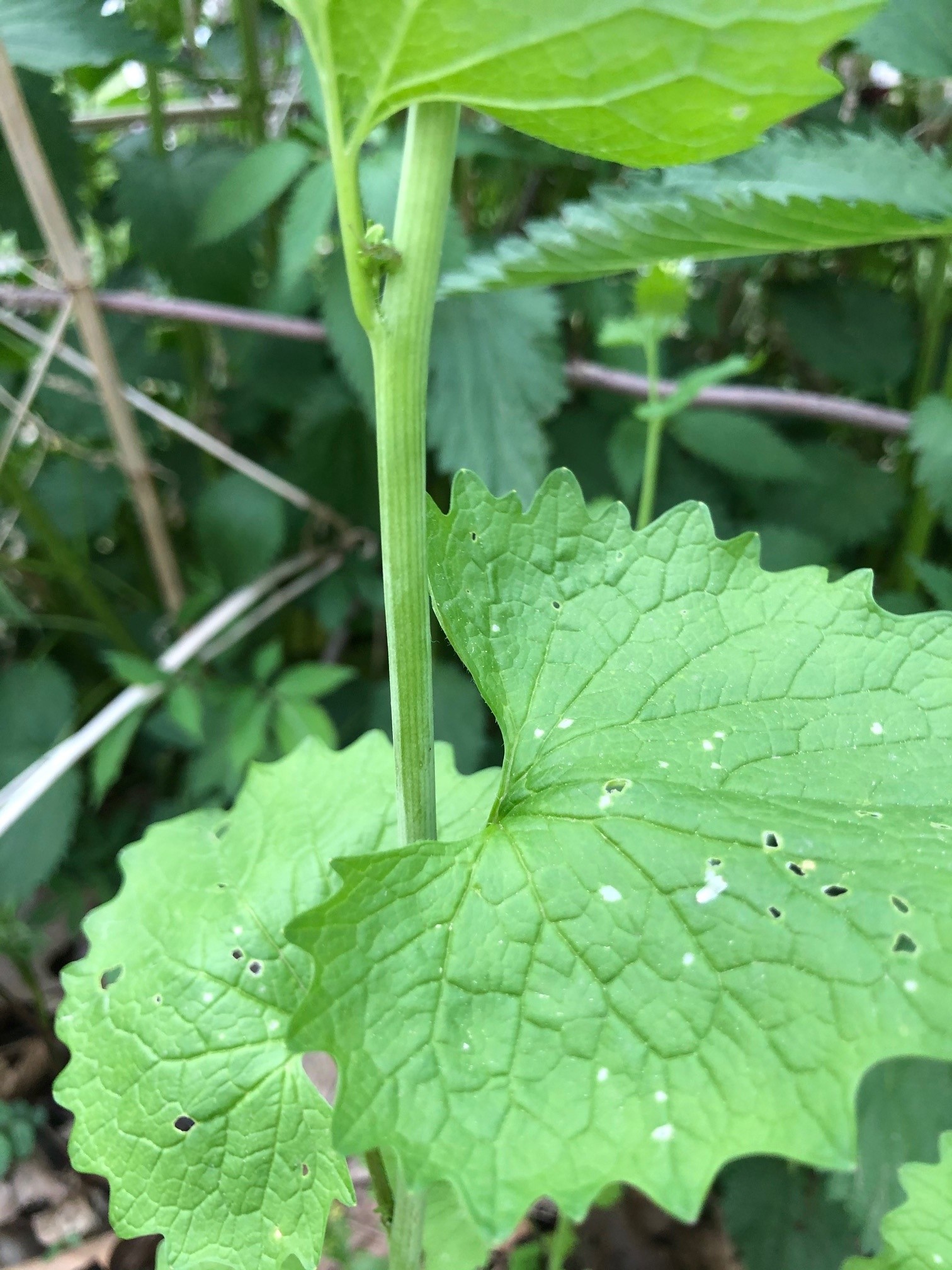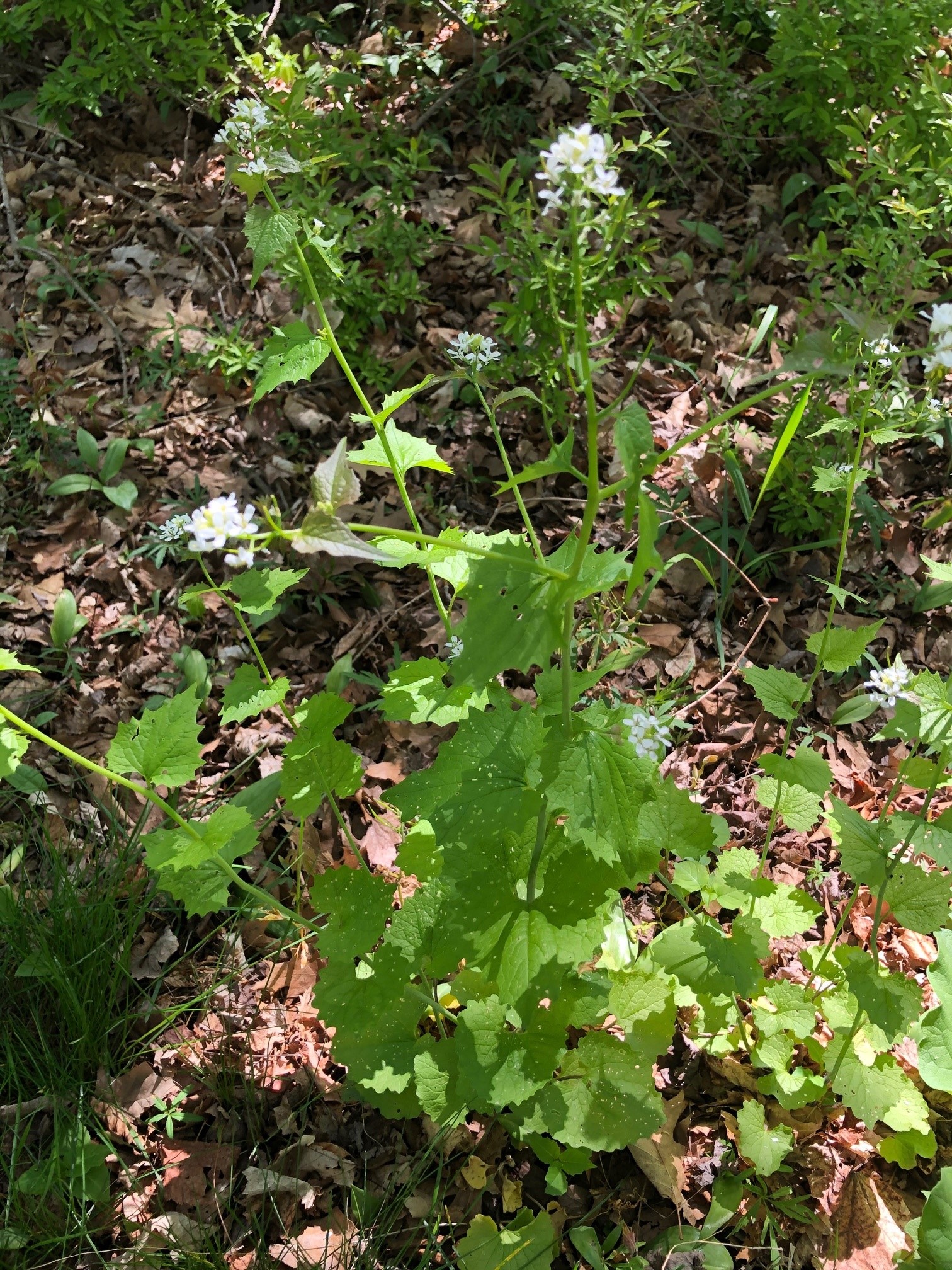
Garlic mustard - Alliaria petiolate (Bieb.) Cavara & Grande
Alliaria petiolate (Bieb.) Cavara & Grande
Brassicaceae (mustard family)
MI Status
Non-native
Life Cycle
Biennial
Leaves
The first-year plant consists of a small rosette of heart shaped leaves. The leaf margins are shallow to coarsely toothed and wavy. The upper surface has a strong network of veins. The petioles of the lower leaves are long and slender. The second-year leaves are alternate and are similar in appearance. They are usually longer than wide. The foliage is light green in appearance. Plants will have a garlic odor when bruised or crushed.
Stems
The stems in the second-year plants are erect to ascending. They are simple or sparsely branching. The stems and the petioles are occasionally hairy, otherwise they are smooth like the blades of the leaves. The upper stems will terminate in narrow raceme of flowers.
Flowers and fruit
Clusters of small, white, 4-petaled flowers develop at the end of the upper stems. As the flowers mature and develop seedpods, the raceme becomes more elongated, and they become more separated. The seed pods are long, narrow, and green. They are about 1.5-2” long. Each seedpod contains a single row of black seeds.
Reproduction
Seeds. This invasive plant can reseed aggressively and quickly through woodlots, outcompeting understory plants including tree seedlings. Garlic mustard produces allelopathic compounds that can limit seed germination in other species.







 Print
Print Email
Email





